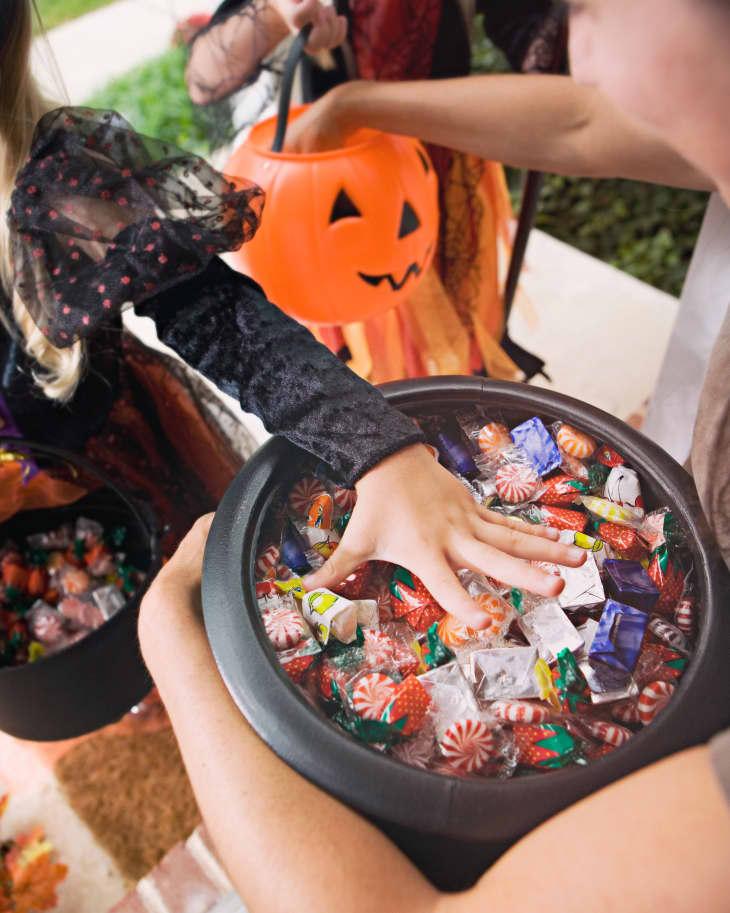Why We Give Out Candy on Halloween: A Short History
Americans buy approximately 600 million pounds of candy for Halloween every year. If you’re not sure what exactly that looks like, consider this: The Titanic weighed about 100 million pounds. Now, picture six Titanic ships made of candy. That’s a lot of candy!
And it does make one wonder: Where did this sweet tradition get its start?
The Invention of “Candy Day”
As you may have guessed, we have the candy industry to thank — at least in part. Back in 1916, Christmas and Easter were the major holidays to peddle sweets, but execs were looking for a way to boost fall candy sales.
So, they started pitching the idea of Candy Day, celebrated the second Saturday in October. They sold it as a holiday of goodwill and friendship, although it was really a manufactured holiday invented with one goal in mind: making money.
Candy Day was renamed “Sweetest Day” to link the idea of candy and friendship and held that title until the 1950s.
The Rise of Treats as an Alternative to Tricks
While the candy industry was on the hunt for a fall holiday, neighborhood parents were looking for an organized activity to keep youngsters out of trouble. And by the late 1940s, passing out treats was established as an alternative to tricks.
Once candy companies realized that trick-or-treating was here to stay, they attempted to capitalize on the holiday, shifting attention away from their Sweetest Day. They focused on getting shopkeepers to promote candy as the thing to pass out on Halloween.
Back in the 1950s and 1960s, kids could expect to get nuts, coins, or toys from certain houses, and if they did get a sweet treat, it was typically a home-baked good. But as trick-or-treating grew in popularity, the economic and ease factors of candy began to make it the more popular giveaway.
Busy moms liked candy as a giveaway because it was premade and prepackaged; also, it was easy to buy in bulk. And by the 1970s, candy was pretty much the sole thing given out on Halloween.
Candy as Innate Cool-Weather Urge?
Perhaps there’s something else at work here. Another theory is that candy may have anthropological significance. According to candy historian Beth Kimmerle, the desire for sugar in the fall is an instinctual part of the human psyche.
Back in the day, when communities would have to preserve their food with sugar and honey to get through winter, caramel was an important part of the autumn season. There’s also an ancient instinct, Kimmerle says, to pack on some pounds before winter, when fresh food might not be as readily available.
Whether candy is a cool-weather urge or not, it’s certainly become a deeply ingrained part of this season. Today, sugar and Halloween are basically synonymous, and this year it’s already been predicted that Americans will spend an all-time high amount of cash on candy.
What do you think about trick-or-treating? And do you have a favorite Halloween candy?
